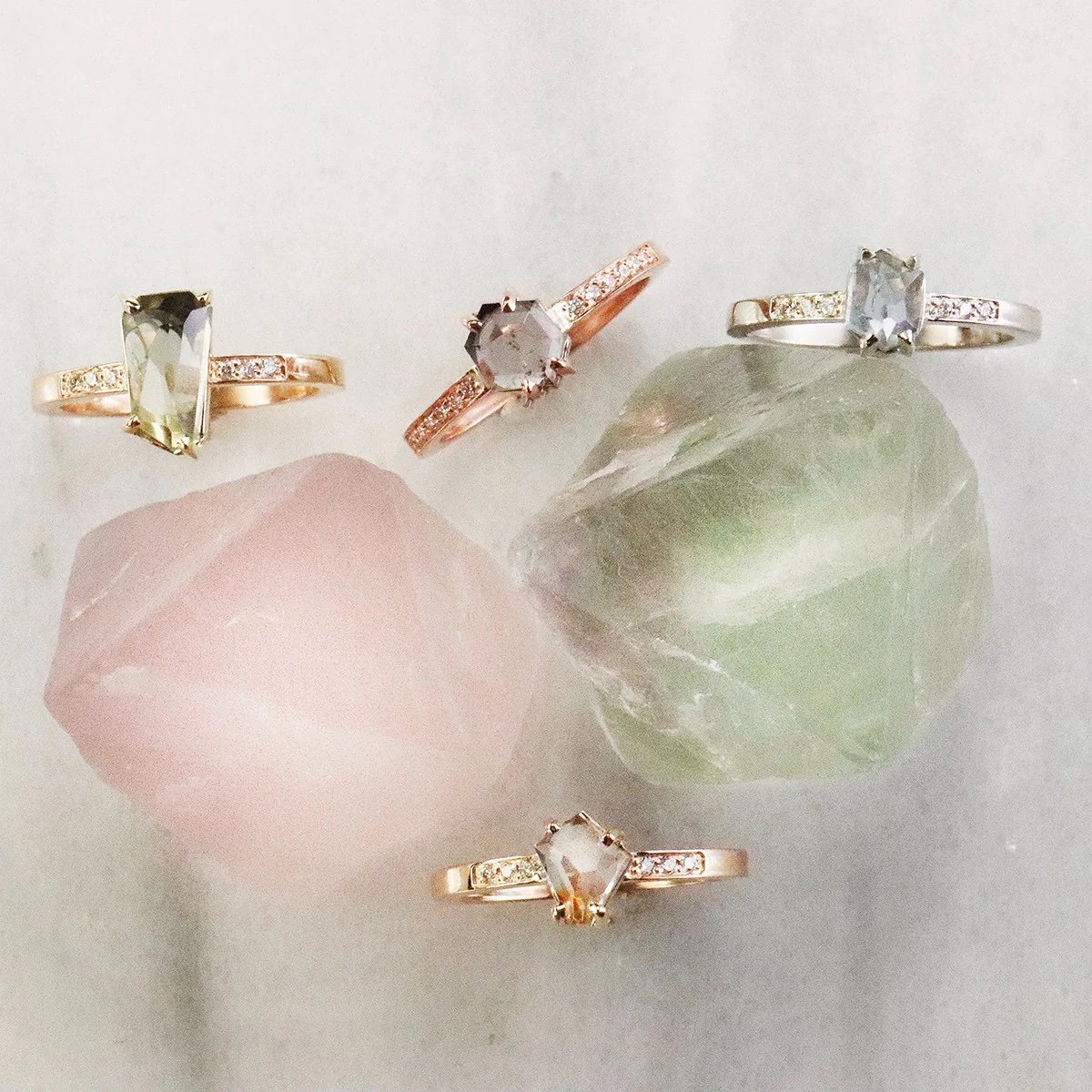A Guide to Different Types of Gold in Handcrafted Jewelry
Gold has been prized for its spectacular luster and versatility for more than a millennium. In fact, evidence shows that some of the first interactions with gold occurred in ancient Egypt around 3,000 B.C. when the beautiful metal was cherished by temple priests and pharaohs.
Today, gold is readily available in the form of stunning necklaces, bracelets, rings, and earrings. Due to its malleable properties, gold can be manipulated into a wide variety of shapes and designs to create wearable pieces of art. While most people associate gold with its yellow sheen, you can find this precious metal in several different hues.
Gold can also be characterized by karats and whether it is gold-plated. Here is a look at the different types of gold available and what you can expect with each purchase.
Colors of Gold
Color is typically the first thing a person notices when shopping for gold jewelry. The type and percentage of metal alloys found in gold ultimately determine its color. Some of the most common colors of gold include:
1. Yellow Gold
The purest color of all colored golds is yellow. The mineral appears golden when mined and gets its lovely yellow shine from saturated alloys. Yellow gold is the most hypoallergenic of all gold colors and requires the least amount of maintenance. Yellow gold engagement rings are common, especially for vintage-style settings. Sport your favorite gold pieces with warm or earthy tones. Nautical, bohemian, and preppy fashions are popular styles that suit gold jewelry effortlessly.
2. White Gold
White gold is a contemporary color of gold that looks like silver. This type of gold is created by combining gold from alloys like zinc, copper, and palladium. White gold tends to be more scratch-resistant compared to yellow gold as it is plated with a hard element known as rhodium. It is also more affordable, making it a cost-friendly alternative. White gold is one of the most versatile metals to style as it’s neutral and goes with almost anything, especially jewel tones.
3. Rose Gold
Rose gold is a warm, unique gold color with a pink hue that is created by incorporating less silver and more copper. Also referred to as red gold or pink gold, rose gold can be found in a diverse range of shades based on the amount of copper it contains. Rose gold is typically more affordable than other types of gold due to its content of inexpensive copper. This extra copper also makes the gold more durable than both yellow and white gold. Rose gold jewelry looks great with neutral colors, such as beige tones, black, white, and navy.
4. Other Colors
While yellow, white, and rose gold are the most common types of gold, they are not the only types available. When shopping for gold jewelry, you may also find the occasional black, green, grey, or blue gold piece. The different colors of gold are created from a mixture of different metals. For example, green gold is mixed with gold, silver, and occasionally copper. Blue gold is an alloy of gold and either indium or gallium.
Karats of Gold
Gold purity is broken down into categories using the karat system. Jewelry is generally categorized as 24K, 22K, 18K, 14K, or 10K based on the ratio of pure gold to other alloys.
24K Gold – 24K gold jewelry refers to 100 percent pure gold without other traces of metals. As the purest option, it is also the most expensive. It can be difficult to find jewelry made from 24K gold as the metal tends to be very soft and can bend and scratch easily. It has a deep yellow hue and is more commonly used to create gold bars or coins.
22K Gold – A 22K piece of gold contains approximately 92 percent of gold and the remaining 8 percent is a mixture of alloys like silver, nickel, and zinc. This addition of alloys makes 22K gold a little harder than pure gold, making it a poor option for gemstones and diamond-studded jewelry.
18K Gold – 18K gold is an alloy of gold that contains 75 percent gold and 25 percent other metals like silver and copper. An 18K gold piece of jewelry is durable enough for occasional wear but should not be worn daily.
14K Gold – Gold that contains approximately 58 percent pure gold and 42 percent of other metals is known as 14K gold. Since 14K gold contains a large percentage of other metals, it is more resistant to scratches and can withstand an active lifestyle. 14K gold is the most common in jewelry-making.
10K Gold – 10K gold contains about 42 percent of gold and 48 percent of other metals, such as zinc, nickel, and silver. It is very sturdy and does not bend or scratch easily. It is also one of the most affordable options and can be found in a wide range of styles.
Shop Handcrafted Gold Jewelry
In search of gold jewelry in your favorite type of gold? At Chinchar Maloney, we make all our own alloys from 24K gold. Browse our collection of handcrafted jewelry, including Montana sapphire jewelry, modern rustic jewelry, and jewelry featuring sparkling natural diamonds. Customers can also choose to work with our Custom Specialist to build custom engagement rings enhanced with our spectacular loose diamonds and gemstones. Contact our team today to learn more or to schedule an appointment to visit our showroom.


